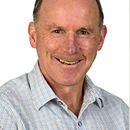How we help
Protecting Australians at work
Research shows that around 5,000 cancer cases each year in Australia are due to exposure to occupational risk factors. Cancer Council is at the forefront of the effort to protect Australian workers through research, education and workplace policy change.
Around 3.6 million Australians, or 40% of the working population, are exposed to at least one cancer-causing agent in their workplace, with around 5,000 cancer cases caused by occupational exposure every year.
A key part of Cancer Council's work to prevent occupational cancers has been to identify the known or suspected carcinogens (a substance that can cause cancer) lurking in Australian workplaces. Comprehensive research has identified 38 cancer-causing agents. The most significant current workplace carcinogens are UV radiation, diesel engine exhaust, second-hand tobacco smoke, benzene, lead and silica. Most workers exposed to these agents will not necessarily develop cancer, but exposure at harmful levels does increase cancer risk – particularly the risk of developing cancers of the lungs, skin, bladder and blood.
Asbestos used to be the most important workplace carcinogen as it was used across a range of industries for many years and it is still present in many buildings. It was banned from use in Australia from 2004 following the release of research that linked it conclusively with mesothelioma – a particularly deadly cancer of the lung. While asbestos is still present in our environment and an occupational cancer risk, its lethal impact has been significantly reduced through highly successful education and awareness programs led by organisations such as Cancer Council, as well as the implementation of strict government policies around safety. It’s this successful approach that Cancer Council will adopt to minimise the impact of other significant carcinogens.

Professor Tim DriscollOur overall aim is to help people understand that exposure to cancer causing agents is not uncommon in the course of work, but that it is possible to eliminate or minimise that exposure and the risk associated with it."
Chair, Occupational and Environmental Cancer Risk Committee, Cancer Council Australia
Despite this strong foundation, tackling workplace cancer is still complex. Cancer can take many years, or even decades, to develop and people may have other related risk factor exposure, so it’s often hard to see the connection between the exposure and the type of cancer that results. The workplace is also an area fraught with competing pressures from different parties, making it hard to change both individual behaviours and overarching safety regulations and policy.
At Cancer Council we are using our internationally-recognised expertise in public health, research and education to engage with government authorities and workplaces to actively overcome these challenges.
DEVELOPING SOLUTIONS
One way we are leveraging our expertise is through Cancer Council’s Occupational and Environmental Cancer Risk Committee, which brings together Australia’s leading experts in the field to measure the problem, develop solutions and evaluate the impact. Our membership of the National Industrial Chemical Notification and Assessment Scheme Committee has also enabled us to meaningfully contribute to the national rules and regulations around how potential carcinogens are regulated, as well as influencing government policy around how workers should be protected against exposure.
Cancer Council is a trusted and independent player, offering a credible health voice to encourage employers and regulators to meaningfully reduce, control and regulate workplace carcinogens with public health and safety as the primary priority."
Importantly, Cancer Council is also changing the conversation around what it means to be safe at work and empowering people to make their own decisions about their health. Partnerships with organisations like Safe Work Australia enable Cancer Council to actively influence how cancer prevention is perceived in workplaces. Rather than focussing mainly on making sure a worker gets home safely each night, both employers and employees are being urged and supported to think about the long-term consequences of the work environment.
The kNOw Workplace Cancer campaign is a great illustration of the work we are delivering in partnership with experts and workplaces around the country to raise awareness of occupational and environmental cancers. Using evidence-based posters, videos, fact sheets and online resources, the campaign empowers both employers and employees to identify and address exposure to carcinogens in their workplace.
Thanks to the support of our donors, Cancer Council has made significant progress in preventing workplace related cancers. But there is much work still to be done. Rates of cancer due to workplace exposure are likely to increase unless we create an environment where exposure to cancer-causing agents in the workplace is further minimised. For this reason, Cancer Council will continue to evaluate and refine our existing programs, measure behavioural change and exposure levels and reinforce these critically important safety messages to Australia’s valued workforces in our efforts to reach a cancer free future.
Our prevention stories
Learn more about how we are helping to stop cancer before it starts
